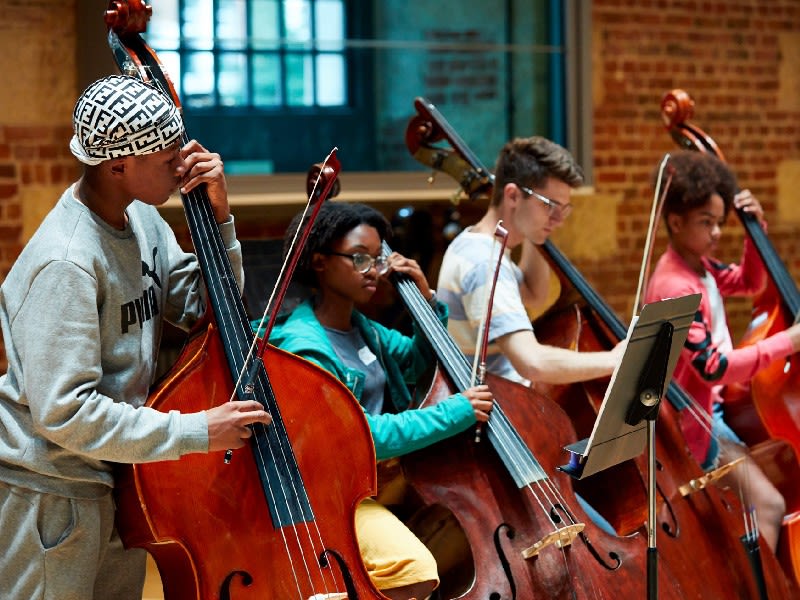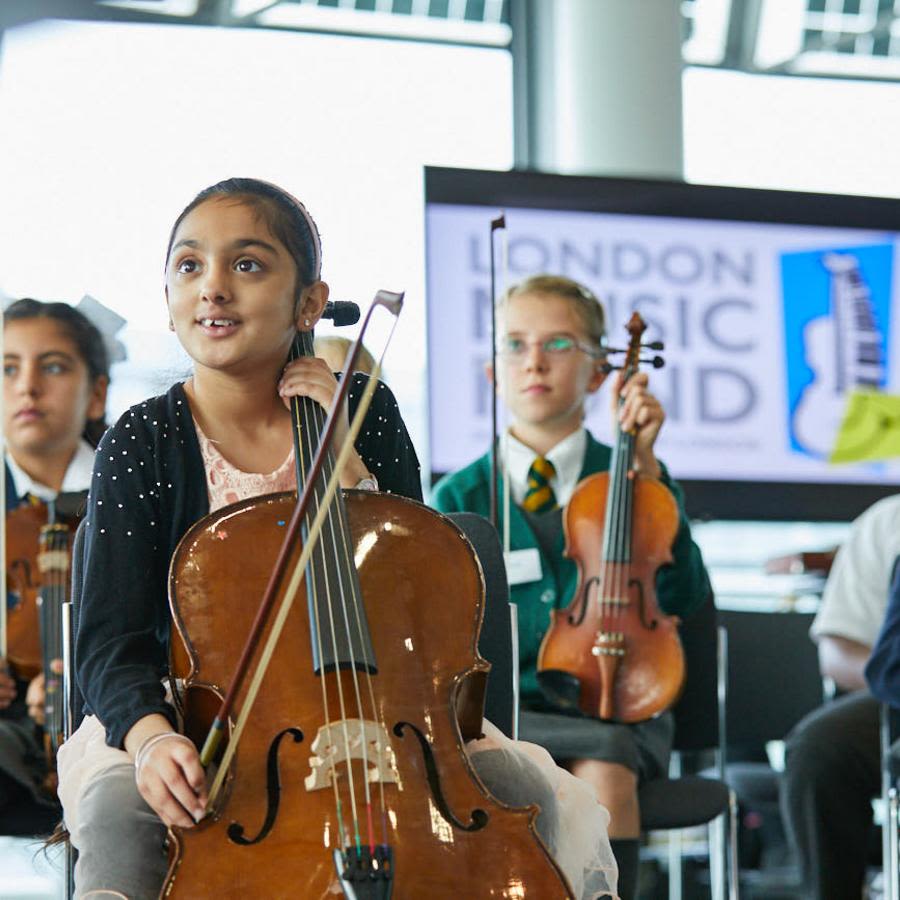BMW Classics
Sunday 15 August 2021
Trafalgar Square & live on YouTube
Concert starts 6.30pm BST
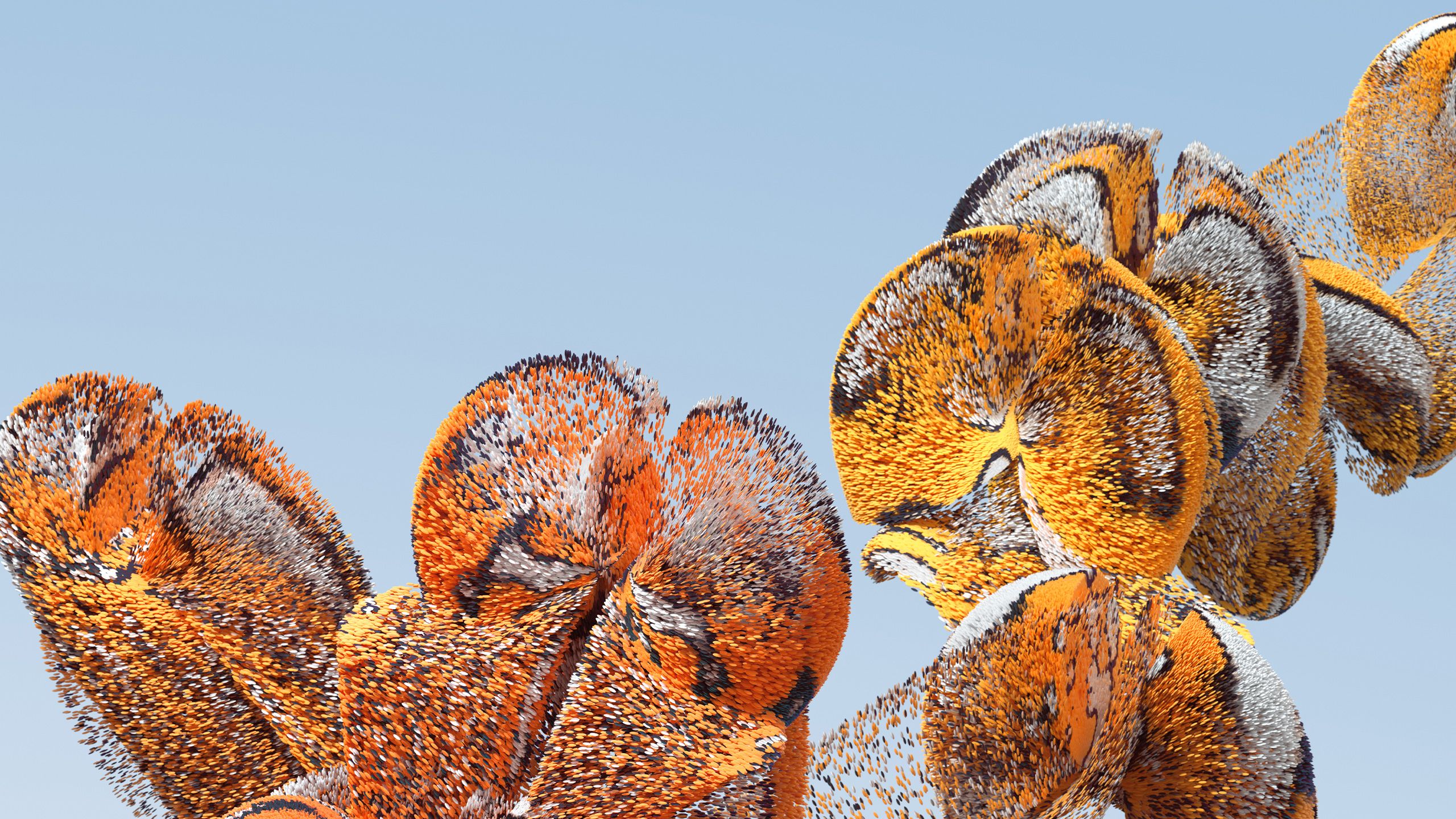
BMW Classics has been transforming one of London's most iconic landmarks, Trafalgar Square, into a giant, open-air music hall for one day each year since 2012.
This year, the London Symphony Orchestra and Music Director Sir Simon Rattle return to the stage to perform music inspired by dance and ballet. Whether you join us in the Square or watch online, the concert is free for everyone to enjoy!
YOUR CONCERT GUIDE
Use this digital guide to find out all about the concert, and learn more about the music and performers.
Navigate using the menu or menu icon (≡) at the top of the screen. Hover over any highlighted text or click the links for even more information.
CAN YOU HELP US?
We'd love to know more about our audience for BMW Classics, who's watching, why and what you think. Please help us by completing this short survey before or after the concert.
SHARE, FOLLOW & WIN
Share your photos from BMW Classics 2021 on Twitter, Instagram or Facebook and make sure you're following the LSO, and we'll enter you into a draw to win two free tickets to an LSO concert at the Barbican in Autumn 2021.
• Follow the LSO on Twitter, Instagram or Facebook
• Share your photo from the concert
• Tag us and use the hashtag #BMWClassics
In partnership with BMW
In partnership with BMW
Broadcast live on youtube.com/lso
Broadcast live on youtube.com/lso
Need to Know
In the Square
WHAT TIME DOES IT START?
The concert starts at 6.30pm, and the audience will be able to take their place from 5pm. We recommend arriving early to secure a place.
WHEN WILL IT END?
About 8.10pm at the latest.
HOW DO I GET IN AND OUT?
Via the Upper Terrace in front of The National Gallery at either end, and via the south east corner towards the entry for Charing Cross Tube station. The south west corner towards the Mall is exit only.
WHAT IF THE SQUARE FILLS UP?
If it does, we will need to close the entrance barriers. If you leave the Square and it fills up while you are out, you will not be able to get back in.
WHAT SAFETY MEASURES ARE IN PLACE?
The capacity of this year's event has been lowered. We recommend wearing a face covering in crowded areas and inside, and encourage everyone to check in using NHS Test and Trace, and to take a rapid lateral flow test before attending.
Need to Know
Watching Online
WHAT TIME DOES IT START?
We'll start the live stream from the Square at 6.20pm BST, ahead of the concert beginning at 6.30pm BST.
WHERE CAN I WATCH?
Click here to watch for free on the LSO's YouTube channel.
IS IT INTERACTIVE?
Yes! You can use the live chat function on YouTube to ask any questions you have, or just say hello and tell us where you're watching from..
CAN I WATCH AFTER THE LIVE STREAM?
Yes, the full concert will be available for 90 days afterwards.
.
.
.
Welcome
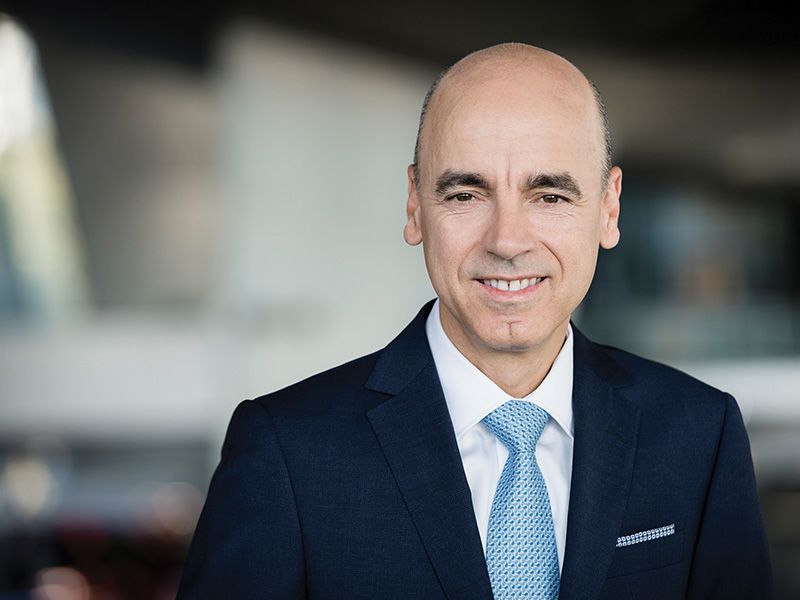
Dr Nicolas Peter © Rainer Häckle
It is a great pleasure to welcome you to the 2021 BMW Classics concert. This year marks the 10th anniversary of our partnership with the London Symphony Orchestra and with it this concert, which has long since become a staple in London’s classical music scene.
The last year and a half has been especially tough on those working in the music industry. For what seemed like an eternity, the open-air concerts, which would normally have filled the spring and summer air with the tunes of Britten, Beethoven and Debussy, had to be silenced.
It is for this very reason that this year’s concert is so special. We once again transform the historic Trafalgar Square into London’s largest concert hall. And with prominent artists of all ages on stage, including Sir Simon Rattle and the young star Leia Zhu, we are certain that this concert will be one to remember.
This year also marks the 50th anniversary of BMW’s global cultural engagement. For half a century, the BMW Group has supported cultural initiatives all over the world. Our goal has always remained the same: to provide artistic talents with a stage and to make that stage accessible to all willing to dive into the world of art and culture. And today, that applies whether you are tuning in online or are physically present in London.
Thank you for being here with us. I wish you all a wonderful concert.

Dr Nicolas Peter Member of the Board of Management of BMW AG, Finance
Dr Nicolas Peter Member of the Board of Management of BMW AG, Finance
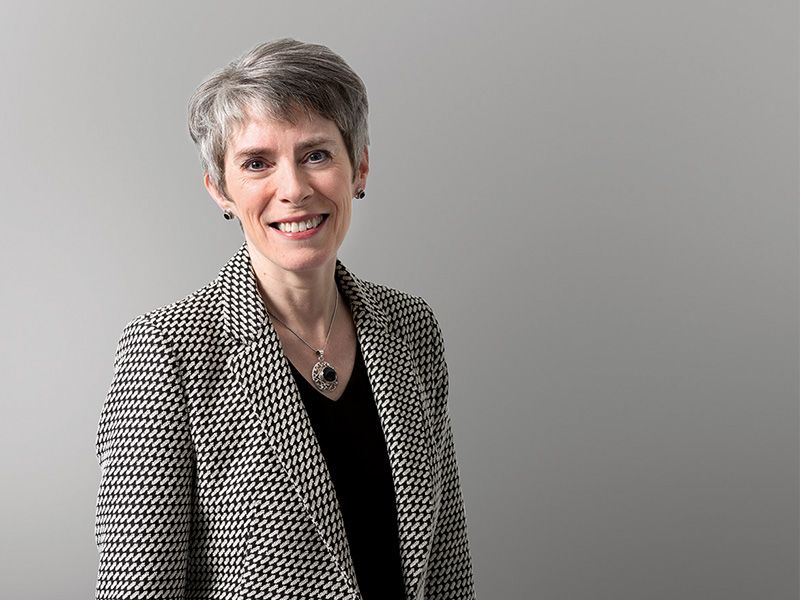
Kathryn McDowell © Ranald Mackechnie
A warm welcome to this BMW Classics concert, whether you join us here in Trafalgar Square, or online.
Making great music free for everyone to enjoy has always been at the core of this event. Following the challenges of the past year, in which we have seen how music has the power to comfort, energise and entertain, we are particularly delighted to return to the Square. Our thanks to BMW for sharing in our commitment and for their ongoing support – of this event, and as long-standing Principal Partner.
LSO Music Director Sir Simon Rattle guides us through this year's programme of music inspired by dance and ballet, as we also celebrate the next generation of musical talent. It is a pleasure to welcome teenage violin prodigy Leia Zhu, guest soloist for Saint-Saens showpiece Introduction and Rondo capriccioso, and young musicians from the LSO East London Academy, who join the Orchestra for the first live performance of DreamCity by Ayanna Witter-Johnson, a past member of the LSO Panufnik Composer Scheme.
Thank you to all who have made this event possible, in particular to Sadiq Khan, the Mayor of London, for the opportunity to perform in this fantastic landmark, and to YouTube, our streaming partner, for enabling us to reach out to audiences worldwide.
I hope you enjoy the performance.

Kathryn McDowell CBE DL Managing Director, London Symphony Orchestra
Kathryn McDowell CBE DL Managing Director, London Symphony Orchestra
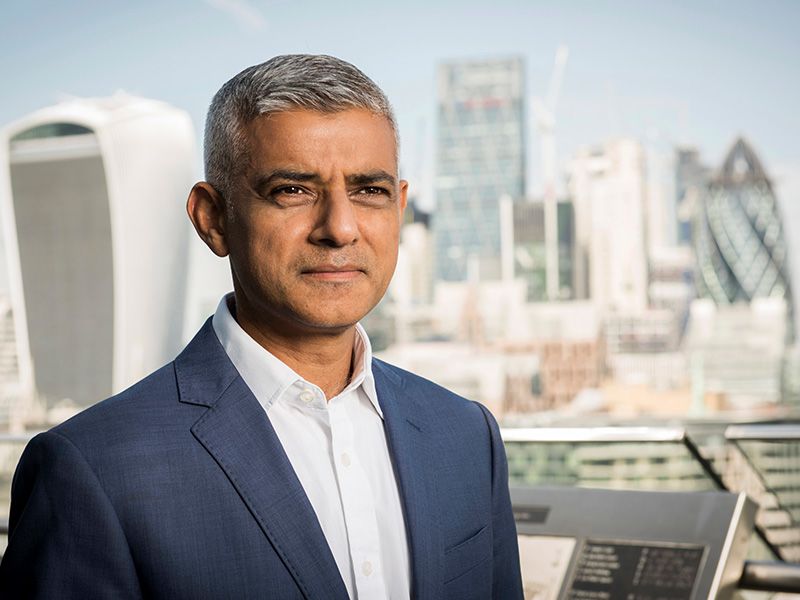
Sadiq Khan © Greater London Authority
Welcome to Trafalgar Square, at the heart of the best city in the world.
After a year where we’ve all really missed the joy of live music, I’m thrilled to welcome the London Symphony Orchestra and Sir Simon Rattle back to perform in this iconic location for audiences in the Square and around the globe.
BMW Classics is part of Let’s Do London, the biggest domestic tourism campaign the capital has ever seen. It’s an invitation to come back to central London safely and enjoy all the things we’ve been missing – our world-class culture, hospitality, retail and nightlife.
This concert not only features music by some of the great composers, but provides a platform for the next generation. Talented teenager Leia Zhu will take centre stage as a special guest soloist. And Ayanna Witter-Johnson’s DreamCity gets its first live performance, featuring young musicians from East London.
Have a wonderful evening.

Sadiq Khan Mayor of London
Sadiq Khan Mayor of London

Dr Nicolas Peter © Rainer Häckle
Dr Nicolas Peter © Rainer Häckle

Kathryn McDowell © Ranald Mackechnie
Kathryn McDowell © Ranald Mackechnie

Sadiq Khan © Greater London Authority
Sadiq Khan © Greater London Authority
Programme & Performers
Antonín Dvořák Slavonic Dances Op 46, Nos 1 & 3
Camille Saint-Saëns Introduction and Rondo capriccioso
Ayanna Witter-Johnson DreamCity *
Pyotr Ilyich Tchaikovsky The Nutcracker – Ballet: Act II
Sir Simon Rattle conductor
Leia Zhu violin
London Symphony Orchestra
LSO East London Academy Young Musicians *
Antonín Dvořák
Slavonic Dances Op 46, Nos 1 & 3
✒️ 1878| ⏰ 8 minutes
No 1 in C major: Furiant
No 3 in A-flat major: Polka
Antonín Dvořák was relatively unknown at the time he was commissioned to write the Slavonic Dances in 1878. The German composer Johannes Brahms had spotted that Dvořák had won several prizes, and suggested his publishers contact the younger Czech. They did, requesting he write Bohemian dances in the style of Johannes Brahms’ Hungarian Dances.
Opus 46 was first published as a set of piano duets for amateur players. Their popularity spread like wildfire, and soon Dvořák re-wrote them to be played by an orchestra, and even composed a second set (called Opus 72) in 1886. His seat in the musical firmament was confirmed.
At the time of Dvořák’s birth in 1841, Czech people had no real country of their own; the regions where they lived – Bohemia, Moravia and Silesia – were part of the Austrian Empire. It was during his lifetime that these regions fought for political independence, a sentiment which filtered through to the arts community. Composers started wanting musical independence too, and to no longer be overshadowed by the German and Italian styles of music popular at that time. They began using folk tunes and dance rhythms, the beginnings of musical nationalism.
Dvořák’s life-long passion was the Czech national folk tradition, and while he wrote a lot of Czech-sounding compositions, in fact, he hardly ever used any actual folk melodies in his music. He was a sort of magpie, stealing elements from his native musical heritage, most notably the rhythms, but writing the melodies himself. His Slavonic Dances are no different , but that does not belie their heritage.
The set of dances literally flies off the score with an untamed Furiant, for which dancers – and the orchestra – have to be on their toes in more ways than one as it constantly shifts gears. The Polka is a type of dance which was originated by peasants, but here its usual ‘quick-quick-slow’ rhythm is heard on occasional blasts, enveloped by a gentle melody.
Note by Sarah Breeden
Antonín Dvořák
1841 to 1904 (Bohemia, now Czech Republic)

Today, Antonín Dvořák is celebrated as one of Europe’s most forward-thinking, idiosyncratic and accomplished composers, but he came from relatively humble origins. Born in 1841 in a small village near Prague, his father was an innkeeper and a butcher who encouraged him to take up the violin at six years old.
Having studied the organ in Prague as a teenager, Dvořák wrote his first symphony at the age of 24, subtitled The Bells of Zlonice after a village he lived in as a child. This love for his home country echoes throughout his work, which often makes use of Slavic rhythms, melodies and folklore. He continued to compose with moderate success until 1875, when he was catapulted to fame by a number of major works he composed that year, including his Symphony No 5 and Serenade for Strings.
Moving to the United States in 1892, he was appointed Director of the National Conservatory, one of few music conservatoires to accept women and students from ethnic minorities at that time. Dvořák wrote a series of newspaper articles during this time advocating African American and Native American music, and these influences can be heard in his famous Symphony No 9, ‘From the New World’.
Composer profile by Sarah Breeden


LISTEN TO OUR RECORDINGS
Music by Antonín Dvorák was on the very first CDs the LSO sold through its own record label, LSO Live, in 1999. We've made over 150 recordings, and featured on many more, including some classic film scores like Star Wars. You can find the LSO on Apple and Spotify.
Camille Saint-Saëns
Introduction and Rondo capriccioso in A minor Op 28
✒️1863 | ⏰10 minutes
Leia Zhu violin
Camille Saint-Saëns was brilliant at many things – a composer, virtuoso pianist, multi-linguist and pretty nifty at archaeology and astronomy – but he wasn’t a proficient violinist. He had a love for the instrument though, and wrote a number of pieces for it including the Violin Concerto in A major, composed for one Pablo de Sarasate, wielder of wicked bow action and phenomenal fingering. In 1859 a precocious 15-year-old Sarasate approached the 24-year-old Saint-Saëns in the hope that he would compose something for him. Saint-Saëns was rather flattered and, after the Violin Concerto, he went on to compose the even more challenging Introduction and Rondo capriccioso for the Spaniard. This mini-concerto has become one of the most performed works of brilliance beloved by virtuoso violinists.
Saint-Saëns composed the work with Sarasate’s style of playing in mind and it fitted the violinist like a glove, with its Spanish dance feel and glorious melodies. It delighted Parisian audiences of the time, who appreciated a musical amuse-bouche. But it is so much more than that and pleased sophisticates too, even Saint-Saëns’s contemporary, composer Claude Debussy – he went on to make four-hand piano arrangement. (No love was lost between the two composers. Debussy was heard to complain ‘I have a horror of sentimentality and cannot forget that its name is Saint-Saëns’. Saint- Saëns, in turn described Debussy’s music as ‘noise’!)
Don’t be fooled by the slow Introduction, gorgeous though it is: it is the prequal to the fireworks to come. The music’s Spanish dance character is immediately heard conjuring up images of swaggering matadors to the backdrop of the colours of the sun bouncing off the Spanish vista. Full of violin-type effects with head-spinning, lightning-quick running passages, double stops, scurries in the upper echelons of the range and sumptuous melodies on the lower strings, the piece ends with a wonderful virtuosic and dazzling flourish. Watch out for sparks flying off Leia’s fingers!
Note by Sarah Breeden
Camille Saint-Saëns
1835 (France) to 1921 (Algeria)

You may not realise it, but you would certainly recognise some of Saint-Saëns’ music. Remember BBC TV’s Jonathan Creek? The theme tune – the demonic Danse macabre by Saint-Saëns. The 1978 pop song ‘If I had Words’ used in cute-piglet fest Babe (1995)? The tune is from his Organ Symphony. Heard of ‘The Dying Swan’? It's actually ‘The Swan’ from Carnival of the Animals, one of the most famous works often performed at concerts for children, and a firm favourite to this day. During his lifetime Saint-Saëns produced a whole plethora of works – operas, symphonies, concertos, and a cornucopia of smaller pieces – but it is just these few works that endure, alongside his Cello Concerto and opera Samson and Delilah.
A child-genius from practically day one, Parisian Camille Saint-Saëns gave composer Amadeus Mozart – another famous music prodigy – a run for his money. He seemed to excel at everything, especially music, had perfect pitch from aged two, composed his first piece aged three and gave his first professional performance aged ten. This is like being taken on at Arsenal FC or attending university at the same age. After that he never stopped performing and composing practically until the day he died, and he lived a long life.
It wasn’t all wine and roses though. Tragedy struck when both his two sons died in infancy which shattered his marriage, and he never quite fulfilled his potential, or rather lived up to other people’s expectations. He was out of kilter with his contemporaries who were pushing the musical envelope with impressionism and he was often tarred with being thought of as rather conservative. A little harsh as he often promoted the music of up-and-coming composers. There is a lot to admire of this organist, conductor, critic and teacher and worth digging deep into his music.
Composer profile by Sarah Breeden


Ayanna Witter-Johnson
DreamCity
✒️2020 | ⏰4 minutes
LSO East London Academy Young Musicians
DreamCity is a vibrant, energetic and rhythmically pulsing song without words for string orchestra. Inspired by conversations with the young string players of the LSO East London Academy (ELA) on their personal experiences of the lockdowns that occurred in 2020, I drew upon the themes of personal creativity, perseverance, uncertainty, dreams, dance and playing games.
The process of creating this piece was unique to us all. I first created a series of 34 individual fragments that reflected the themes above. These fragments, composed for Violin I, Violin II, Viola, Cello and Double Bass, were then recorded by five musicians of the London Symphony Orchestra at LSO St Luke's. From these recordings, I created a series of 'backing tracks' for each of the 34 fragments.
With the support of the five LSO Members as mentors, LSO ELA players learned and then recorded the fragments at home. They created a total of 480 recordings that I then used as raw material to build the piece.
As a collective, I felt that we were all linked through our experiences of living in one of the world's most active and engaging cities, physically and culturally, and I wanted to reflect that in the energy of the piece, combining the elements of classical lyricism and edgy inner-city vibe.
It’s an incredibly exciting development to be able to perform DreamCity for a live audience. Alongside the wonderful recording, this will be a fantastic experience for the young musicians to now enjoy the piece in this way.
Note by Ayanna Witter-Johnson
Ayanna Witter-Johnson
b 1980s

Some composers defy succinct definition, and shoehorning Ayanna Witter-Johnson into a tidy profile is no mean feat. Her music blurs boundaries between classical and alternative RnB – two genres that rarely coexist – and you are just as likely to find her singing while playing the cello, as you are to find her poring over an orchestral score. This remarkable confluence of styles stems from a childhood that was saturated with music of every shape and colour. ‘My dad and uncle are DJs and my mum loves to sing,’ says Ayanna, ‘so I embraced a pretty healthy diet of classical piano and cello studies while absorbing pop culture, soul, jazz, reggae, hip-hop and RnB music throughout my childhood and until now.’
Witter-Johnson was just three years old when her mother spotted an aptitude for music and took her to her first piano lesson, and she took up the cello as her second instrument (now very much her first) when she was 13. She went on to graduate with a first from both Trinity Laban and the Manhattan School of Music, and in 2009 was featured as an Emerging Artist in Residence at London’s Southbank Centre. Since then, she has been commissioned by the Ligeti Quartet, Kronos Quartet and London Symphony Orchestra, collaborated with Anoushka Shankar and Courtney Pine, and been nominated for a MOBO award.
She cites Bob Marley and Stevie Wonder among her greatest influences as readily as she does Bach and Debussy, and while many of her works chronicle her experience as a female artist in the 21st century, she is also no stranger to tackling issues of social oppression and globalisation. Her music is impossible to label (and why should we?) but its guiding principle is one of authenticity and personal truth.
Composer profile by Jo Kirkbride


WATCH THE LSO ONLINE
There are almost 600 videos on the LSO's YouTube channel, from performances to interviews and masterclasses. Over 100 of those are performances of music by living composers, just like this piece.
Pyotr Ilyich Tchaikovsky
The Nutcracker – Ballet: Act II
✒️1892 | ⏰45 minutes
A perennial Christmas favourite, The Nutcracker is arguably the most famous ballet and the most performed. It is a testament to Tchaikovsky’s genius that it is full of glorious, hum-able tunes recognisable from multiple cultural sources (those of a certain age will remember the Cadbury’s advert for fruit and nut chocolate), and reworked into several musical genres including a famous Duke Ellington jazz version.
Commissioned by the Director of the Mariinsky Imperial Theatres, it is based on the children’s fairy story The Nutcracker and the Mouse King by German author ETA Hoffman, The ballet’s conception was rather fraught, however. Tchaikovsky was not at all keen on the choreographer Marius Petipa's interpretations – a fan of Hoffman, he felt that Petipa’s version did not live up to the original. And he was going through an emotional trauma at the time, the combined result of continual attacks from St Petersburg critics, the rejection by the Tsar of his latest opera The Queen of Spades, and the disastrous breakdown of his well-documented friendship with the wealthy widow Nadezhda von Meck, and his experience living with depression. As if this were not enough, his beloved sister, Sasha died suddenly.
It is a wonder, then, that a single note was ever written, but out of darkness comes light: Tchaikovsky poured all his love for his sister into the role of Clara, with fond memories of shared Christmases past. At last, the ballet started to take shape. Listen carefully, though, and there are moments of melancholy, most notably in the 'Pas de Deux' and in the more sombre moments of the ‘Waltz of the Flowers’.
The LSO performs the second act. Here's the story so far…
Clara and Fritz are celebrating Christmas with their family. Amongst their many gifts, Clara is given a nutcracker shaped like a man. Her annoying brother breaks it and she is devastated. At midnight magic fills the air: the tree grows to an unbelievable height, mice fill the room and the nutcracker becomes the size of a man! A battle ensues between the mice, led by the Mouse King, and the Nutcracker who leads the charge of toy soldiers. To save the Nutcracker, Clara throws a well-aimed shoe at the King – the Nutcracker is victorious! In gratitude he takes her on a magical journey to the Kingdom of Sweets, and this is where we join them.
The Enchanted Palace Of The Kingdom Of Sweets sets the scene with promises of a bright dolly mixture of delights. Then follows Divertissement, where Clara is entertained by sweets from around the world, each characterised by a different dance:
Chocolate (Spanish Dance) – bright trumpets and castanets represent sunny Spanish shores;
Coffee (Arabian Dance) – muted strings, cor anglais and bass clarinets all contribute to conjuring up hazy shades of the mysterious aromatic desert;
Tea (Chinese Dance) – a cheeky duo of a busy piccolo and an insistent contrabassoon keeps the Chinese dancers on their toes;
Candy canes (Russian Dance) – a trepak, which is a lively Ukrainian folk dance traditionally performed by men.
In Dance of the Reed-Pipes – also known as Dance of the Mirlitons – cakes are offered to the illustrious guests: flutes are used here because the French word ‘mirliton’ means a toy wind instrument, and is also a pastry filled with whipped cream – a happy combination!
Mother Gigogne is a similar character to the old woman who lived in a shoe with far too many children. She is represented by two Parisian street songs in Mother Gigogne and the Clowns.
After a brief wind chorale, harp flourishes introduce the famous Waltz of the Flowers. The Pas de Deux danced by the Sugar Plum Fairy and the Prince gives away Tchaikovsky’s melancholic mood with a yearning theme, soulfully played on the cellos.
Dance of the Sugar Plum Fairy comes next, in which Tchaikovsky uses the celesta, a keyboard instrument which had only recently been invented at the time of composition. Its name comes from its ‘celestial’ or ‘unearthly’ sound. Finishing with the Final Waltz, the perfect way to end a visit to a dream-world before Clara, and the audience, are whisked back to reality.
Note by Sarah Breeden
Pyotr Ilyich Tchaikovsky
1840 to 1893 (Russia)
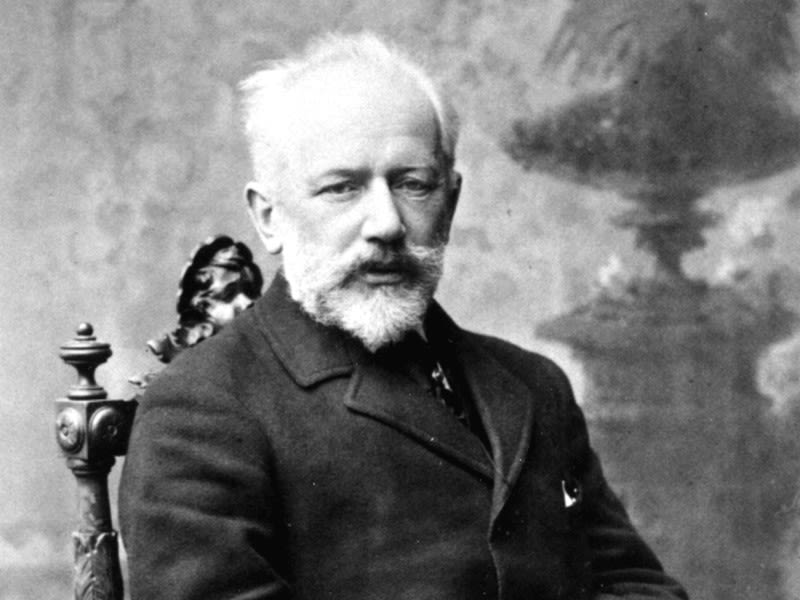
Think of Tchaikovsky and the man of myth may spring to mind: the tortured soul, unable to live life as a gay man, living with depression, his death surrounded by intrigue. Much is written of his enigmatic relationship with his long-term benefactor – business woman Nadezhda von Meck – who demanded that they never meet, not to mention manic episodes and a disastrous (for both parties) marriage to an infatuated student.
But that’s not the whole story. Similarly to Saint-Saëns, Tchaikovsky was born into a middle-class family and had a talent for music, but he was no child-genius. At his family’s wishes he studied law, got a job in the Ministry of Justice and was pretty successful. But the lure of music was too great and he eventually enrolled in the St Petersburg Conservatory.
By 1870 he had penned the Romeo and Juliet Fantasy Overture, his earliest piece to become a firm favourite, and from then on he never looked back. Once he started composing in earnest, the most memorable, well-known rich, beautiful music flowed out of him. The Nutcracker is just one of three best-loved ballets that he wrote, alongside Swan Lake and Sleeping Beauty. Eugene Onegin (which also includes wonderful dance music) and The Queen of Spades are opera-house favourites. His 1812 Overture (that’s the one sometimes heard at outdoor concerts with cannon-fire) never fails to impress and his Violin Concerto and Symphony No 6, 'Pathétique' are never far from concert listings or Spotify playlists.
Tchaikovsky poured his troubled soul into his expressive music. It is no mystery that his music has long touched people’s lives and continues to delight, and give solace and pleasure.
Composer profile by Sarah Breeden


COME AND SEE US AGAIN
The LSO's home is at the Barbican in the City of London, and has been since 1982. We perform concerts there almost every week from September to June, with Wildcard tickets starting at just £10 + booking fee.
Sir Simon Rattle
LSO Music Director

Sir Simon Rattle © Oliver Helbig
From 1980 to 1998, Sir Simon was Principal Conductor and Artistic Adviser of the City of Birmingham Symphony Orchestra and was appointed Music Director in 1990. In 2002 he took up the position of Artistic Director and Chief Conductor of the Berlin Philharmonic, where he remained until the end of the 2017/18 season. Sir Simon took up the position of Music Director of the London Symphony Orchestra in September 2017 and will remain there until the 2023/24 season, when he will take the title of Conductor Emeritus. From the 2023/24 season Sir Simon will take up the position of Chief Conductor of the Symphonieorchester des Bayerischen Rundfunks in Munich. He is a Principal Artist of the Orchestra of the Age of Enlightenment and Founding Patron of Birmingham Contemporary Music Group.
Sir Simon has made over 70 recordings for EMI (now Warner Classics) and has received numerous prestigious international awards for his recordings on various labels. Releases on EMI include Stravinsky’s Symphony of Psalms (which received the 2009 Grammy Award for Best Choral Performance), Berlioz's Symphonie fantastique, Ravel’s L'enfant et les sortilèges, Tchaikovsky’s The Nutcracker – Suite, Mahler’s Symphony No 2 and Stravinsky’s The Rite of Spring. From 2014 Sir Simon continued to build his recording portfolio with the Berlin Philharmonic’s new in-house label, Berliner Philharmoniker Recordings, which led to recordings of the Beethoven, Schumann and Sibelius symphony cycles. Sir Simon’s most recent recordings include Rachmaninoff's Symphony No 2, Beethoven's Christ on the Mount of Olives and Ravel, Dutilleux and Delage on Blu-Ray and DVD with LSO Live.
Music education is of supreme importance to Sir Simon, and his partnership with the Berlin Philharmonic broke new ground with the education programme Zukunft@Bphil, earning him the Comenius Prize, the Schiller Special Prize from the city of Mannheim, the Golden Camera and the Urania Medal. He and the Berlin Philharmonic were also appointed International UNICEF Ambassadors in 2004 – the first time this honour has been conferred on an artistic ensemble. Sir Simon has also been awarded several prestigious personal honours which include a knighthood in 1994, becoming a member of the Order of Merit from Her Majesty the Queen in 2014 and most recently, was bestowed the Order of Merit in Berlin in 2018. In 2019, Sir Simon was given the Freedom of the City of London.

Sir Simon Rattle © Oliver Helbig
Sir Simon Rattle © Oliver Helbig
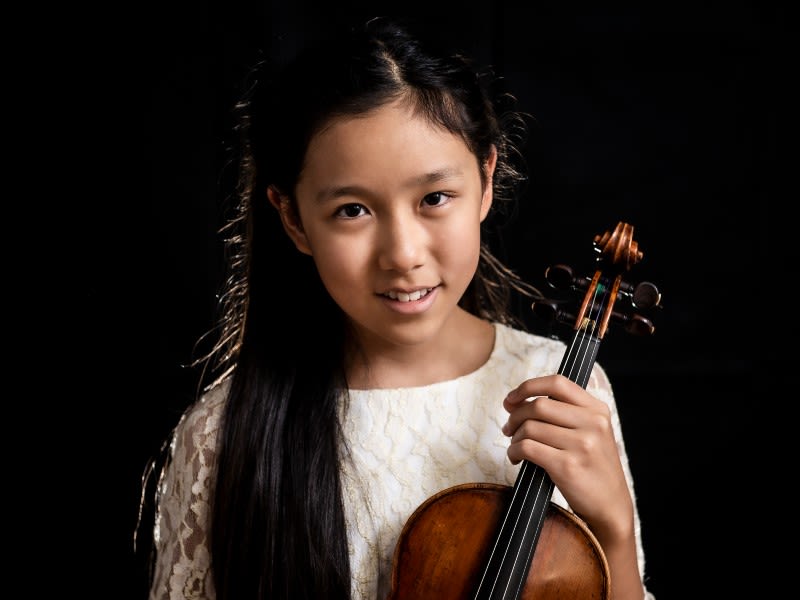
Leia Zhu © Zhutek
Leia Zhu © Zhutek
Leia Zhu
violin

Leia Zhu © Zhutek
Fourteen-year-old British violinist Leia Zhu has performed with prestigious ensembles and orchestras across the globe, including Festival Strings Lucerne, Mariinsky Symphony Orchestra, Russian National Orchestra and the National Orchestra of Belgium. She has played at the Salzburg, Lucerne, Rheingau Musik, Mozartfest Würzburg, White Nights and Trans-Siberian Art Festivals, to name a few, and her musical journey has also taken her to major concert halls across Europe, including the Royal Festival Hall, Brussels’ BOZAR, Berliner Philharmonie and Moscow’s Tchaikovsky Concert Hall.
Zhu’s UK concerto debut came in February 2020 with the English Chamber Orchestra, with whom she performed Mendelssohn’s Violin Concerto and Dvořák’s Romance under conductor Joseph Wolfe. In 2019, she embarked on a two-week, six-city tour of Israel with the Tel Aviv Soloists Ensemble, and she has previously toured Switzerland and Germany with Festival Strings Lucerne, performed across the north of England as soloist with the English Philharmonic Ensemble, and toured Spain with the Los Angeles-based Classical Concert Chamber Orchestra.
Special collaborations have included playing the fifth movement of Lalo’s Symphonie espagnole, conducted by Maxim Vengerov with the National Orchestra of Belgium at BOZAR in 2016, performing Sarasate’s Navarra for two violins with Noah Bendix-Balgley (leader of the Berlin Philharmonic Orchestra) at the Berliner Philharmonie in 2017, and sharing the stage with Roby Lakatos in Monti’s Czardas, accompanied by the Russian State Symphony Orchestra, broadcast live to an audience of millions in 2018.
She is featured in the London Mozart Players series Spotlight On…, returning for multiple engagements with the orchestra during the 2021/22 season – as well as to the English Chamber Orchestra. Next season she also appears in recital at Tonhalle Zurich, opens the Festival Strings Lucerne’s concert series at KKL – and later joins the ensemble on a three-city tour to Italy – and takes part in the Lucerne Symphony Orchestra’s Rising Stars concert.
In producing her own regular YouTube videos – as 'The Violin Girl' – Leia is a confident communicator and a passionate advocate for classical music. She has been featured by international media outlets including Classic FM, BBC News, Sky News, The Strad magazine, Violin Channel and Violinist.com.
LSO East London Academy
The LSO East London Academy, launched in 2019, aims to identify and develop the potential of East Londoners aged 11–18. The two-year programme is delivered by musicians from the LSO, and provides free, high-level training and mentoring for young musicians who show exceptional promise, accelerating their instrumental learning, confidence and aspirations.
The LSO East London Academy aims to represent the diversity of East London, particularly encouraging young musicians from backgrounds currently under-represented in professional orchestras, including those from Black, Asian and ethnically diverse backgrounds, and those that experience financial, cultural and practical barriers.
Musical opportunities, both in and out of school, are vital to support young people's social contact, mental health and musical progression. In Autumn 2020, against the backdrop of the pandemic, an innovative composition, coaching and recording project was devised to support the continuation of the LSO East London Academy young musicians’ musical development and social connection. The result was a new piece with the LSO East London Academy at its heart, DreamCity by Ayanna Witter-Johnson.
LSO ELA Musicians On Stage
First Violins
Joanna Afroozi
Rejus Jakas
Kristiyan Mladenov
Amira Rowe
Chenbo Zhang
Second Violins
Nir Amin
Olivia Padmore
Yohan Louis
Olivia Koczan
Violas
Andrei Gheorghe
Adelechi Agwu-Kalu
Maggie Liu
Cellos
Cecilia Ilori
Roman Ganiyev
Irobosa Osagie
Double Basses
Hadessah Nanjo
Derrick Iroanusi
Erin Elonge
London Symphony Orchestra
The London Symphony Orchestra was established in 1904, and is built on the belief that extraordinary music should be available to everyone, everywhere.
Today, we're ranked among the world's top orchestras. We are Resident Orchestra at the Barbican, and we reach international audiences through touring, online broadcasts and streaming services.
Through our world-leading education and community programme, LSO Discovery, we're connecting people from all walks of life and of all ages to the power great music.
In 1999 we formed our own recording label, LSO Live, which has released over 150 recordings so far. Overall, the LSO has made more recordings than any other orchestra, and we've entertained millions with classic film scores like Star Wars, Indiana Jones, and more.

BMW Classics 2019 © Doug Peters
BMW Classics 2019 © Doug Peters
On Stage
Leader
Carmine Lauri
First Violins
Clare Duckworth
Laura Dixon
Ginette Decuyper
William Melvin
Maxine Kwok *
Laurent Quénelle
Harriet Rayfield
Sylvain Vasseur
Elizabeth Pigram *
Claire Parfitt
Naoko Keatley
Second Violins
David Alberman
Miya Väisänen
David Ballesteros *
Matthew Gardner
Iwona Muszynska
Alix Lagasse
Belinda McFarlane *
Csilla Pogany
Paul Robson
Violas
Edward Vanderspar
Malcolm Johnston
Robert Turner *
Germán Clavijo
Stephen Doman
Sofia Silva Sousa
Anna Bastow *
Nancy Johnson
Cellos
Rebecca Gilliver
Jennifer Brown
Noël Bradshaw
Eve-Marie Caravassilis
Daniel Gardner
Laure Le Dantec *
Amanda Truelove *
Double Basses
Colin Paris *
Patrick Laurence
Thomas Goodman *
Joe Melvin
José Moreira
Flutes
Gareth Davies
Rebecca Larsen
Piccolo
Sharon Williams
Oboes
Olivier Stankiewicz
Rosie Jenkins
Cor Anglais
Henry Clay
Clarinets
Oliver Janes
Chi-Yu Mo
Bass Clarinet
Andrew Harper
Bassoons
Daniel Jemison
Shelly Organ
Horns
Diego Incertis Sánchez
Alexander Edmundson
Angela Barnes
Olivia Gandee
Jonathan Maloney
Trumpets
Niall Keatley
Katherine Smith
Trombones
Rebecca Smith
Andrew Cole
Bass Trombone
Paul Milner
Tuba
Ben Thomson
Timpani
Nigel Thomas
Percussion
Neil Percy
David Jackson
Sam Walton
Harps
Bryn Lewis
Anneke Hodnett
Celeste
Elizabeth Burley
* On stage in DreamCity
We hope you enjoyed BMW Classics 2021
If you joined us in Trafalgar Square, thank you for coming and have a safe journey home. To everyone who watched online, thank you for letting us bring music into your homes.
See you again next year!
TELL US WHAT YOU THOUGHT
We'd love to hear about your BMW Classics experience. Let us know what you thought of the concert by filling out this short survey.
SHARE, FOLLOW & WIN
Share your photos from BMW Classics 2021 on Twitter, Instagram or Facebook and make sure you're following the LSO, and we'll enter you into a draw to win two free tickets to an LSO concert at the Barbican in Autumn 2021.
• Follow the LSO on Twitter, Instagram or Facebook
• Share your photo from the concert
• Tag us and use the hashtag #BMWClassics
Now more than ever, our supporters play a vital role in the LSO's future.
As we emerge from the most challenging period of a generation, your support enables us to continue sharing the joy of music with the broadest range of people possible.
Every donation will help to support our future.
Want to Hear More?
If you enjoyed what you heard at BMW Classics, you can listen to it all again in this playlist, plus some other music we think you'll love. Listen on your way home from Trafalgar Square, or re-live the magic after the concert.
London Music Fund
Developing Potential since 2011
The London Music Fund’s mission is to transform under-served communities by enabling children to access high-quality music education.
Click to learn more and help us change young lives through music.
Programme Contributors
Sarah Breeden contributes to BBC Proms family concert programmes, has written on film music for the LPO and LSO, school notes for the London Sinfonietta and the booklet notes for the EMI Classical Clubhouse series. She worked for the BBC Proms for several years.
Jo Kirkbride is Head of Artistic Planning at the Dunedin Consort. She is an external assessor for Creative Scotland's Open Project Funding strand and sits on the Board of Directors for New Music Scotland.
The LSO is funded by Arts Council England in partnership with the City of London Corporation, which also provides the Orchestra’s permanent home at the Barbican.












